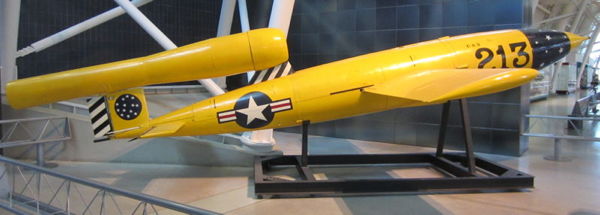Republic-Ford JB-2 Loon
Aircraft Photos Aircraft Home
|
The Loon (V-1 copy) The Republic-Ford JB-2, also known as the KGW and LTV-N-2 Loon, was a United States copy of the German V-1 flying bomb. Developed in 1944, and planned to be used in the United States invasion of Japan (Operation Downfall), the JB-2 was never used in combat. It was the most successful of the United States Army Air Forces Jet Bomb (JB) projects (JB-1 through JB-10) during World War II. Postwar, the JB-2 played a significant role in the development of more advanced surface-to-surface tactical missile systems such as the MGM‐1 Matador and later MGM‐13 Mace. However, in July 1944, three weeks after German V-1 "Buzz Bombs" first struck England on June 12 and 13, American engineers at Wright Field, fired a working copy of the German Argus As 014 pulse-jet engine, "reverse-engineered" from crashed German V-1s that were brought to the United States from England for analysis. The reverse engineering provided the design of America's first mass-produced guided missile, the JB-2. By 8 September, the first of thirteen complete JB-2s, reverse engineered from the material received at Wright Field in July was assembled at Republic Aviation. The United States JB-2 was different from the German V-1 in only the smallest of dimensions. The Loon was cancelled in 1950. This object was donated to the Smithsonian in 1965 by the U.S. Naval Supply Center. Photo 135s, Smithsonian Udvar-Hazy Center, May 2013 |

|
|
The Loon (V-1 copy) Photo missle-yellow-s, NE Air Museum , 2011 |

|